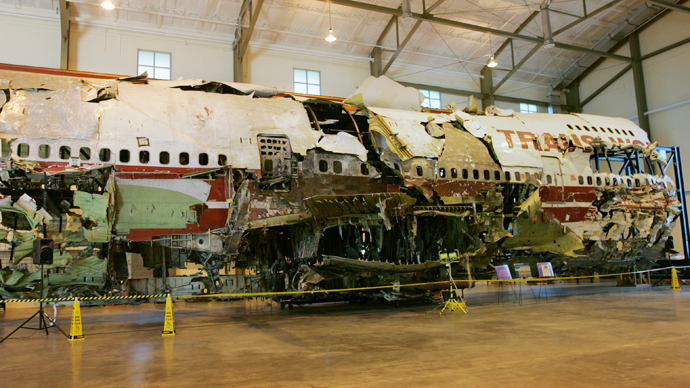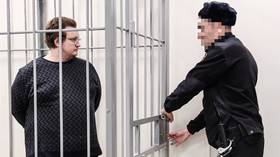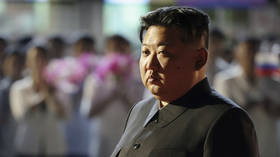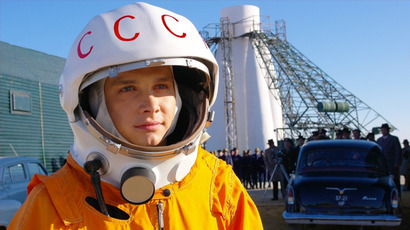Investigators claim government falsified TWA 800 air crash probe

Former investigators of the TWA Flight 800 airplane crash have revealed that an explosion came from outside the plane, thereby contradicting the government’s conclusion that the fatal crash was an accident.
The investigators claim they were silenced from telling the truth by their superiors, and were forced to conclude that the 1996 crash was an accident sparked by a fuel tank explosion. In a new EPIX film called “TWA Flight 800”, the former National Transportation Safety Board investigators communicate their beliefs that an outside explosion was responsible for the deadly crash that occurred nearly 17 years ago, killing all 230 people on board.
The documentary film revolves around the crash of the Trans World
Airlines Flight 800, a Boeing 747-131 that exploded and plunged
into the Atlantic Ocean off the coast of New York on July 17,
1996. The plane had been en route from New York to Paris, but
went up in flames over the Atlantic Ocean, just 12 minutes after
take-off from John F. Kennedy International Airport. There were
no survivors, and some speculated that the plane might have been
the target of a terrorist attack.
Several witnesses alleged that they saw a streak of light moving
toward the aircraft before it exploded, leading some to believe
that an anti-aircraft missile or rocket was responsible for the
explosion. But an NTSB report drawn up after a 16-month
investigation concluded that the “accident” was a result of
faulty wiring that caused an electrical short circuit in the fuel
gauge line, thereby resulting in a devastating fuel tank
explosion. All NTSB employees and investigators were forced to
stand by this conclusion, whether or not they believed it, the
film’s producers said in a statement.
“These investigators were not allowed to speak to the public
or refute any comments made by their superiors and/or NTSB and
FBI officials about their work at the time of the official
investigation,” the statement says.
Despite the NTSB’s report, some Americans continued to believe
that the plane was fatally struck by a missile or rocket. They
were termed conspiracy theorists, and their beliefs long
overshadowed by the government’s official conclusion. Pierre
Salinger, a former Press Secretary for John F. Kennedy and a
reporter for ABC News, claimed he had seen proof that the US Navy
shot down the plane. He argued that the government covered up the
truth to hide the agency’s fatal mistake.

Salinger’s evidence was an e-mail from Richard Russell, a former United Airlines pilot who had obtained a videotape of radar screens from the night of the TWA explosion. But Bob Francis, the former vice chairman of the NTSB, told CNN that Salinger was “an idiot” who “didn’t know what he was talking about” and was “totally irresponsible”.
The crash is considered the third-deadliest US aviation accident
in history, but the now-retired NTSB investigators featured in
the documentary are hinting that it may never have been an
“accident” at all. Interviews with members of the NTSB team will
air on EPIX TV next month, on the 17-year anniversary of the
deadly crash.
Six whistleblowers featured in the film are expected to expose
the government’s cover-up of an incident that may have been an
attack, a grave mistake by the Navy, or some other external
force, if their claims are true. The producers of the film say
that the NTSB investigators do not speculate about the source of
the external explosion, but simply contradict the government’s
official report.
“This team of investigators who actually handled the wreckage
and victims’ bodies, prove that the officially proposed fuel-air
explosion did not cause the crash,” the producers said in a
statement. “They also provide radar and forensic evidence
proving that one or more ordnance explosions outside the aircraft
caused the crash.”
Tom Stalcup, co-producer of the film, told CNN that the
documentary provides “solid proof” of the external
detonation.
“Of course, everyone knows about the eyewitness statements,
but we also have corroborating information from the radar data,
and the radar data shows an asymmetric explosion coming out of
that plane – something that didn’t happen in the official
theory,” Stalcup added.
The film’s producers have submitted a petition, demanding that
the NTSB reopen its investigation using new evidence provided by
the documentary. A number of former investigators have signed the
document.
The film has the potential to solve the mystery of a deadly crash in which no survivors were left to testify about its cause. Although the retired NTSB investigators do not speculate about the cause of the attack, a previous incident may provide some insight into the realm of possibilities behind it.

On October 4, 2001, a Russian commercial airliner en route from
Tel Aviv to Novosibirsk crashed in the Black Sea, causing the
fatalities of all 78 passengers onboard. A number of reports
surfaced after the incident, claiming that a Ukrainian
anti-aircraft missile was fired at the aircraft. For days,
Russian and Ukrainian officials dismissed the theories.
But on October 12, officials admitted that the plane had indeed
been shot down.
''The metal parts found in the plane and a few of the bodies
closely resemble -- in shape and weight -- the shrapnel that
stuff the S-200 missile,'' Yevgeny Shaposhnikov, a member of
the investigation team, announced in 2001. ''Ukraine's
evidence that all missiles fired during the training either hit
their targets or self-destructed is not convincing.''
Ukrainian officials admitted that they had mistakenly shot down
the Russian Tu-154 airliner.
The cause of the Tu-154 crash was revealed days after it
occurred, but the mystery of the TWA Flight 800 still remains.
But with NTSB investigators providing evidence of an external
explosion, new details about the 1996 crash may soon arise.














